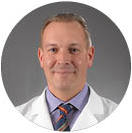Pain is a complex topic for both patients and physicians. Successful implementation of patient education is critical, or you risk losing their attention once they begin feeling some improvement in their pain. Though it is, of course, integral to get patients out of pain, it is also important to ensure their long-term health and well-being after acute pain has passed. I like to think in terms of health optimization, which requires going beyond maintaining adequate health to instead achieve best-case outcomes. This approach has an entirely different feel to your patients—one they will appreciate!
However, patient education is not best achieved by overloading the patient with information, particularly while they are burdened with a chronic or acute pain condition. I like to think of patient education as taking place in roughly three stages, each of which has its own unique challenges, approaches and opportunities. During the red phase, the patient presents with acute or debilitating pain. During the yellow phase, the patient still suffers from mild to moderate pain or occasional flare-ups but is subacute. During the green phase, the patient is no longer actively in pain, and most physicians would provide maintenance care.
Red Phase
When a patient comes in for an appointment with acute pain, it is best to minimize patient education for the time being. The first priority is to get them out of pain by decreasing inflammation or edema and addressing any muscle spasms. Though you may allude to longer-term health goals, that should not take priority. At the initial exam, we begin interventions that are designed to get the ball rolling immediately:
- Stretches
- Targeted exercise
- A plan for chiropractic manipulation, if appropriate
You may also provide the patient with nutraceuticals containing proven pain relief and injury recovery factors, including:
- Proteolytic enzymes
- Bioflavonoids
- Turmeric
- Boswellia
- Cramp bark (for cases involving muscle spasms)
Shortly after the initial exam, it is important to follow up with a Report of Findings wherein we check for early progress and begin to lay out a treatment plan in more detail—albeit with a primary focus on resolving the acute situation as quickly as possible. We talk to the patient about what is happening with their condition and how we intend to relieve it physically, and we begin to discuss how factors such as diet, sleep, stress, weight loss and exercise play a role in pain. It is crucial at this stage to set proper patient expectations for how quickly they may improve. We also often stress that we will provide further education and work toward lasting recovery beginning in the subacute phase.
Yellow Phase
Once the patient has begun to improve and their condition has entered a subacute phase, they are much more likely to have the energy to listen to detailed plans and long-term perspectives on their condition. At this stage, we arrange a follow-up consult where we can both adjust the treatment protocol for the subacute phase and begin patient education in earnest.
This phase is also when we explain to the patient how we can work to prevent fibrotic tissue and adhesion formation and introduce rehabilitation exercises to increase pain-free range of motion. The nutritional protocol also changes, and we explain to them the science and data behind the dietary changes and specific supplements we recommend.
For example, the collagen we use with patients provides hyaluronic acid in conjunction with type 1 and type 2 collagen, which are the proper molecular size for bioactivity and have been backed by 24 clinical studies in humans. This type of collagen allows ligaments to heal without scar tissue and joints to develop proper resiliency, lubrication and elasticity. It can even restore lost cartilage, which in the past was thought to be impossible. Sharing this knowledge keeps the patient informed and helps them distinguish our well-researched recommendations from other poorer-quality generic supplements.
The yellow phase is critical for patient education because their motivation to continue changing lifestyle habits decreases once they begin to feel better. Their eye is no longer on the ball, so I often ask them, “What are your goals?” This is when we really work together to strategize how they can achieve optimal well-being. Maybe one of their goals is to be able to ski that winter. I might say, “Well, in order for you to ski, this is what you can do to prevent reinjury.” The goal is to motivate, not threaten, by engaging in a two-way discussion about what drives them to continue improving.
Green Phase
Once the patient is out of the yellow phase, we again provide a consultation and begin describing other factors that contribute to pain or injury, such as joint pathology and inflammation levels. It is also possible that the root of their ailment involves lifestyle patterns, such as:
- Lack of sleep
- Inflammatory diet
- Inadequate exercise
- Too much or inappropriate exercise
- Negative social factors
- Poor stress management
All these elements are critical to delve into while you guide the patient and help them achieve their goals. At my practice, we frequently utilize in-depth informational handouts for extended patient education and compliance. Our health coaches can also spend more time with patients who need extra support during their health optimization journey.
Final Thoughts
I truly feel the success of my practice has been due to patient education and their confidence in the well-researched products and services we provide. If you offer ample support and well-timed education paired with quality research, you will develop a reputation unlike any other.

Educated in both the Netherlands and the United States, Adrian den Boer, ND, DC, IFMCP is a board-certified and licensed naturopathic and chiropractic physician. In addition, Dr. den Boer is fully certified as a functional medicine doctor. Dr. den Boer has treated over 10,000 patients successfully by utilizing multiple resources to manage patient care. Most recently, he joined the Lifestyle Matrix Resource Center as the Clinical Expert serving the MSK Solutions Pain Recovery Program.



